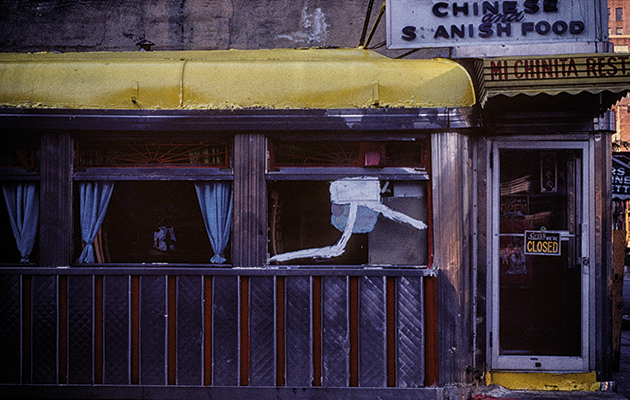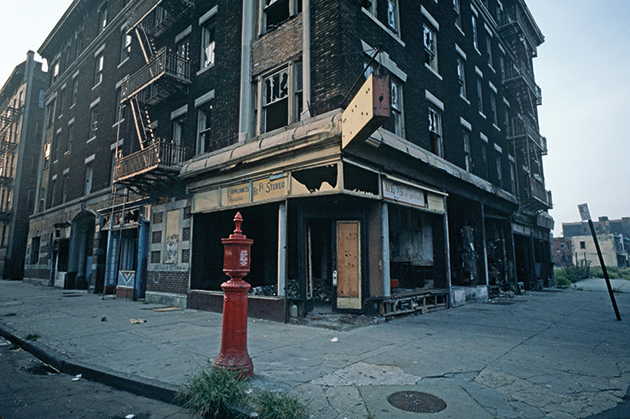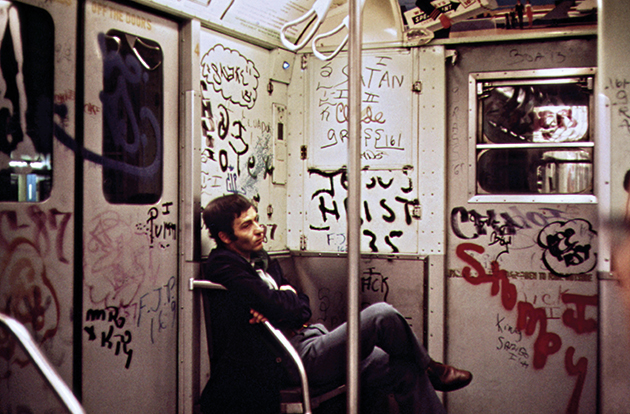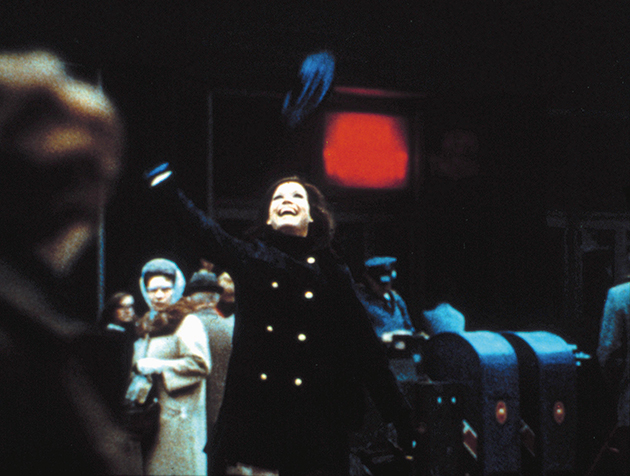 |
||
|
Forty years ago, poverty, crime and de-industrialisation nearly killed off the West’s major cities. Today, an abundance of cash threatens to do a similar thing When mum and dad let me stay up late(ish) as a kid, we’d watch American imports such as Rhoda, Taxi or The Mary Tyler Moore Show, their opening credits throwing an alternative universe into our living room where people hailed yellow taxis, got crushed in skyscraper elevators and stumbled ditzily on sidewalks, laden with Bloomingdale bags. Their stories of ingenues moving to the big city and learning about life the hard way were the latest in a long line stretching back centuries. The big city meant freedom. The big city meant success. ‘You’re going to maaake it after a-aaall … ’, crooned Mary Tyler Moore’s theme tune – even if you were a woman. (By the late 1970s, second-wave feminism had finally hit TV screens.) When I finally did make it to the big city, though – aged seven, on my first trip to London – I was puzzled. The big city, it seemed, wasn’t all skyscrapers and dreams. It was ruined warehouses, too, and broken dreams. The big city had graffitied factories. It was quiet. It was empty. Where were the hot-dog stands? Where were all the people? Those American comedies had lied. By the late 1970s, their tales of urban success were fiction. The big city was dying. Decades of suburbanisation had hollowed out Mary Tyler Moore’s Minneapolis, Rhoda Morgenstern’s New York and the London I visited. From 1939 to 1979, London’s population dropped by 2 million – a quarter. Eight of the ten biggest American cities lost a fifth of their people after 1950; Detroit, Cleveland, Buffalo, New Orleans, Pittsburgh and St Louis lost more than half. Work had emigrated too, to the suburbs or Taiwan. Half a million manufacturing jobs were lost in New York after 1969. In London, tens of thousands were unemployed in the Docklands. There was another story being told about the big city. Mean Streets, Taxi Driver, Dog Day Afternoon, Serpico – 1970s movies that didn’t portray urban life as successful, but told of nightmarish, dangerous streets kerb-crawling with Travis Bickles cleansing the city with tough love. In 1975, New York City came close to bankruptcy. During ‘Fear City’s’ fiscal crisis, robberies, rapes, car thefts and assaults were everyday events, the murder rate doubled and neighbourhoods went up in flames each night. Its decaying infrastructure became a metaphor for a crumbling world order. For 200 years, industrial cities such as New York had been engines of growth. Now the greatest of them was no longer paying its way. |
Words Tom Dyckhoff
Above: Decaying shop fronts on a New York street corner, 1983
Images: John Heseltine / Alamy; Alain Le Garsmeur American Collection; EPA / Alamy; Everett Collection Inc / Alamy |
|
|
||

Abandoned blocks in the South Bronx, New York, August 1977 |
||
| Today, with New York, London and other economically successful cities sparkling with skyscrapers and crammed with the wealthy, it’s easy to forget this moment, barely 40 years ago, when we almost gave up on the idea of the big city as a place of aspiration, as a place you’d choose to live in rather than flee. It was the tail-end of a century of policies borne from the horrifying experience of the 19th-century industrial city, policies designed at first to civilise it with libraries and gas lighting, then to manage it with town planning, but finally, by the 1950s or 60s, when all else had failed, to kill it by transforming it into its antithesis, a low-density suburb of freeways, office parks and detached houses. Freedom and success were now acquired not hugger-mugger with strangers on a city street; you found them alone, behind the wheel of a car, or up in the clouds in your Corbusian, or Ballardian, high-rise.
The gentrifiers, though, disagreed. When, in 1964, sociologist Ruth Glass first remarked on these curious few among the middle classes swimming against the tide back to the big city, she struggled to understand them. But one explanation stood out. ‘Their anti-urban bias,’ she noted, with academic precision, ‘has been substantially modified.’ They were learning to love the big city again. A decade later these few had become many. More sociologists studied them. In 1970, Richard Sennett, in his first book, The Uses of Disorder, analysed the bored teenagers of suburban émigrés, and prescribed a dose of big city to ease their ennui. David Ley, a Welsh-born geography professor, examined what happened ‘when hippies become yuppies’ in 1970s Vancouver, as this ‘new middle class’ marked their distinction, and their territory, by renovating downtown townhouses. Studying Toronto, Jon Caulfield described how emancipatory its gentrifiers found living back in the big city: ‘Old city places offer difference and freedom,’ he wrote, ‘privacy and fantasy, possibilities for carnival.’ The dying city was their playground. So that’s who Rhoda and Mary Tyler Moore were, with their jobs in media and retail, tethered to their credit cards. They were gentrifiers. The rest is history. Gentrification, the return of wealth to the once decaying old city, has become, for the economically successful, the single biggest urban narrative of the past 50 years. The turning point came soon after New York’s fiscal crisis, when president Gerald Ford asked former Wall Street bond trader William E Simon – William the Terrible – to negotiate the terms by which the federal government would bail out the city. He was that new breed, a free marketeer, high on Friedrich von Hayek. His terms were harsh: savage cuts in public spending, the retreat of the state. As Simon told a Senate hearing, ‘I would urge … the overall experience be made so painful that no city, no political subdivision would ever be tempted to go down the same road.’ ‘The city,’ he later wrote, ‘had lived beyond its means for years.’ This was tough love at its hardest. |
||

A commuter sits in a graffiti-covered subway car in New York, May 1973 |
||
| To sweeten the pill, softer tactics were also required. The year after its bail-out, New York State hired advertising agency Wells Rich Greene, and the hot graphic designer Milton Glaser, and set about marketing itself with a now famous logo: I NY. From now on, cities would have to think differently. They were brands. They were businesses. They would no longer be able to rely on public money, and what little they had must be employed attracting the money swilling around the world in the new era of globalised finance. Cities would have to compete for investors, whether multinational corporations or gentrifying ‘Dinky’ (double income no kids) couples with mortgages. They would have to be entrepreneurial. Cities would have to fight – and fight one another – to survive.
Forty years later, this fight has winners. The economically successful have become city states, populated by the so-called ‘metropolitan elite’, tempting the rest with that age-old promise: ‘You’re going to maaake it after a-aaall.’ They measure success in prime-property prices, liveability indices, the volume of city-break tourists or the thrill of their architecture. But, of course, success is a relative term. How successful is a city where the freedom and success it offers are only available to those with money to invest? How successful is a city if, post-Brexit, post-Trump, its alternate universe is so far removed from those watching it on TV in their living rooms that there is no chance of visiting, let alone staying. Is a bankrupt city that gave the world hip hop, punk and disco successful? Or a rich one that gave birth to the cronut and the flat white? As the world shifts yet again, and an age of automation, white-collar unemployment and protectionism beckons, we shall, perhaps, find out. |
||

Mary Tyler Moore – the original gentrifier? |
||



















